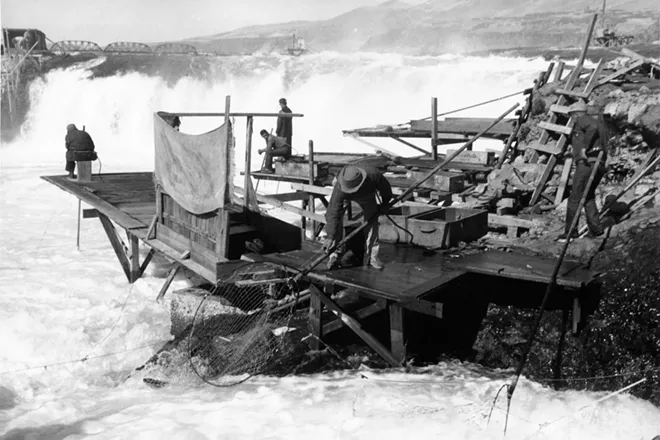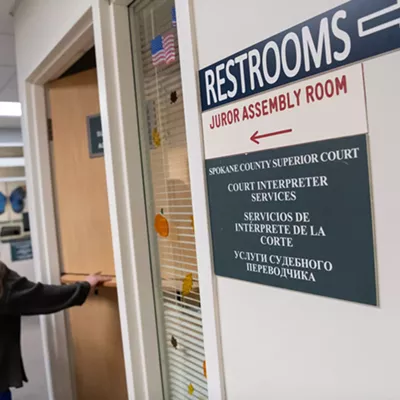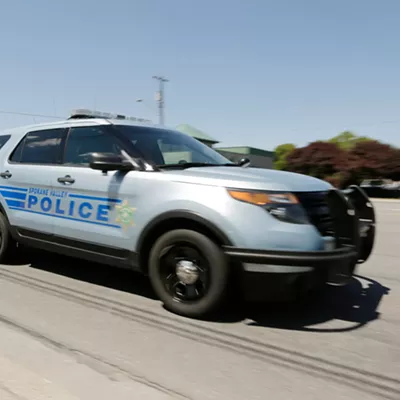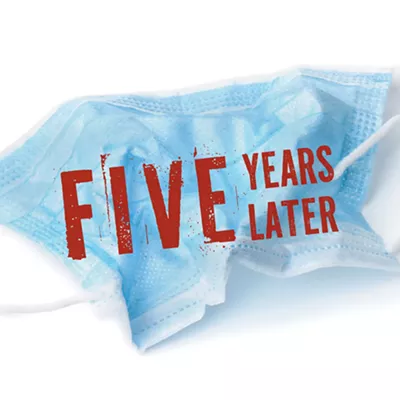
Throughout the 19th and 20th centuries, museums, universities and government agencies looted thousands of Native American gravesites and places of worship. With little or no consultation from local tribes, funerary objects, cultural items and human remains were unceremoniously dug up and transferred to institutions across the country for research and display.
The archaeologists and collectors used words like "excavation" and "field project." Today, we might use words like "grave robbing" or "looting."
In 1990, Congress passed the Native American Graves Protection and Repatriation Act, which requires any federal agency or institution that receives federal funding to return the Native American remains to the tribes they belong to. But more than 30 years later, progress has been haltingly slow.
Earlier this month, the nonprofit investigative newsroom ProPublica published data showing that less than half of the 210,000 Native American remains held in U.S. universities, museums and federal agencies have been returned. It's a list that includes some of the country's most prestigious institutions. University of California, Berkeley still has the remains of more than 9,000 Native Americans. Harvard University still has 6,165 remains.
Under federal law, institutions are required to publicly report the ancestral remains in their possession, and which tribes have a cultural connection that makes them eligible to claim those remains. After the institution establishes that cultural connection and publishes the list, the remains are classified as "made available for return." From there, tribes can make a claim and physically collect the remains.
It's a complicated, sensitive process. The publication of the ProPublica database earlier this month has left some institutions feeling defensive, and saying the data doesn't tell the full story.
Eastern Washington University has reported 100 Native American remains to the federal government. Of those, 81 are currently classified as having been "made available for return."
But Erin Ross, the university's director of tribal relations, says the rest of the remains actually have been inventoried and made available for return to local tribes, but they aren't classified as such because the university is still working on submitting the paperwork. She adds that some federal agencies are technically responsible for some of the remains being held by EWU.
"ProPublica has it pretty black and white, but there's nuance in this," Ross says.
The data shows that Central Washington University has made available for return 69 percent of the more than 200 remains it reported to the federal government.
Lourdes Henebry-DeLeon, a professor in CWU's anthropology department who leads the university's effort to return the remains and cultural items, also takes issue with the bureaucratic framing of the remains as "not made available for return."
"They're in the process, they are available," says Henebry-DeLeon. "They're not hidden, they're not secret, and we're not trying to hold on to them."
CWU has been working closely with a number of local tribal groups for years, Henebry-DeLeon says. The tribal representatives are all aware of the remains, she says, and are involved in the ongoing process of documentation and correcting errors that were made when the remains were originally inventoried. There's a delicate balance between returning the remains quickly and also making sure it's done accurately and with appropriate consultation with local tribes, Henebry-DeLeon says.
Ross, who is a member of the coastal Cowlitz Indian Tribe, explains that repatriation is especially important because of the cultural practices many Native groups have surrounding death and burial.
"It is critical for us, spiritually and culturally, that our ancestors are in their land as quickly as possible," Ross says. "Because in general, our belief is that one's soul cannot rest until one's body is buried in their land."
WAKEMAP MOUND
You can trace the story of some of the remains held by Eastern back to 1952, when a University of Washington field party led by anthropologist Warren Caldwell traveled to a site in Klickitat County — where the Columbia River cuts through the grassy plains on the Washington-Oregon border.Their main focus: Wakemap Mound. A massive, human-made rise of earth the size of a football field.
Lewis and Clark were the first Europeans to write about the mound when they camped near there in 1805, but there's evidence of human activity going back at least 10,000 years. The Wakemap Mound was next to Celilo Falls and Celilo Village — an area known as the Dalles that was a hub for salmon fishing and linked an extensive trade network for Native tribes across the Northwest.
The clock was ticking when Caldwell and his team arrived. The U.S government had just started construction on the Dalles Dam, and in a few years time, the mound would be almost entirely underwater. The lake created by the dam would also displace residents of Celilo Village and submerge the Celilo waterfall — uprooting a millennia-old culture of salmon fishing that sustained the local people.
The work done by Caldwell and his team was being funded by a federal program established in the 1940s to salvage archaeological remains before they were destroyed by federal dam projects.
By 1953, Caldwell and his team had removed the remains of at least seven individuals from the mound, along with associated funerary objects. Two years later, another UW field party led by Robert Butler began work at a site adjacent to the mound. The site was a mass grave. Over the next three years, Butler and his team removed the remains of at least 62 people.
In a letter to a colleague, Butler described an elderly Yakama woman named Martha Skanawa, who angrily confronted him about the pillaging.
"She absolutely refused further contact between us," Butler wrote. "Martha was quite adamant in her speech and quite bitter — and who can blame her?"
While Butler and Caldwell excavated remains at the behest of the federal government, a number of amateur relic hunters dug alongside them, taking thousands of items for profit or their own personal collections. It's unclear what happened to the remains and cultural items taken by the relic hunters. Federal law only applies to institutions that receive federal money.
In 1966, the human remains gathered by Butler and Caldwell were officially transferred to the Burke Museum in Seattle. Because the remains were commingled and scattered throughout the site, identification of individual burials was nonexistent. In 1974, the Burke Museum transferred the 62 human remains taken by Butler and the seven human remains taken by Caldwell to Seattle University, where they sat for almost two decades.
The remains were transferred to EWU in 1992.
Ross, who was hired as EWU's director of tribal relations in summer 2021, says it's her understanding that the transfer to EWU in 1994 happened at the request of a local tribe, who asked that they be sent to the university for inventory. But it wasn't until 2021— more than three decades after NAGPRA passed — that the inventory work began. It's unclear why.
"What happened between then and now — I have no idea," Ross says.
'YOU ARE GOING HOME'
To get to the "made available for return" part of the process, the institution must first determine which tribes have a cultural connection to the remains.
But tribal identity and affiliation can be incredibly complicated. The remains were often taken from geographic locations that a number of tribes have cultural connections to.
For instance, ethnographic documentation indicates that the Wakemap Mound was in the aboriginal territory of the Western Columbia River Sahaptin, Wasco, Wishram, Yakama, Walla Walla, Umatilla, Tenino and Skin tribes. Today, their descendents are represented by the Confederated Tribes and Bands of the Yakama Nation, Confederated Tribes of the Umatilla Reservation, Confederated Tribes of the Warm Springs Reservation of Oregon, and the Nez Perce Tribe.
Attempts to contact the Spokane Tribe of Indians and Confederated Tribes of the Colville Reservation for this article were unsuccessful.
Identifying where the remains come from and who they belong to is a long, difficult process that involves significant consultation from experts and a number of tribal groups. Ross says establishing cultural connection is often difficult because many Native American cultures don't traditionally associate names with graves where loved ones are buried.
At EWU, the ancestral remains that have yet to be repatriated are in boxes in a building on campus. They're not on display or used for research. The lab is behind three locked doors, and Ross has the only key. She asks the building to remain unidentified. It's a sacred place, she says.
Ross received both a bachelor's and a master's from EWU, but says she didn't know about the remains until she was hired as the school's director of tribal relations.
After learning about the remains, Ross went to the lab and placed cedar branches on the boxes. For Coast Salish tribes like her own, she says, the branches signify protection and healing. Ross also talked to the ancestors: "Hey, we're working through the process, you are going home," she recalls saying.
Within two weeks of her being there, the school brought in specialists to inventory the ancestral remains held by the school. EWU was initially hoping Ross could lead them through the federal repatriation process, but Ross quickly realized it would be a full-time job in itself. The school hired Kate Valdez, a full-time NAGPRA coordinator who works directly with the tribal groups.
Over the past two years, Valdez has worked with several local tribal groups to identify the remains in their care. Some have been physically collected by tribes, while others are still waiting to be officially claimed.
While the remains taken by Butler and Caldwell from the Celilo area have been officially made available for return, it's unclear how many have been physically collected by the tribes who represent their ancestors. It's a sensitive and often private process for tribes, Ross says.
Ross says she's conscious of the need to balance speed and accuracy. EWU has made progress, she says, but there's still more work that needs to be done to make things right.
"We do absolutely intend that all ancestors return home," Ross says. ♦

























